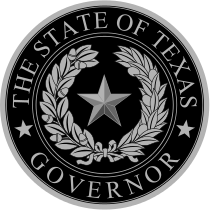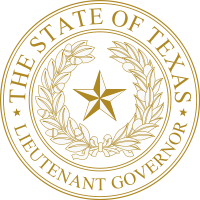Albert Jennings Fountain
| Albert Jennings Fountain | |
|---|---|
 | |
| 14th Lieutenant Governor of Texas | |
|
In office 1871–1873 | |
| Governor | Edmund J. Davis |
| Preceded by | David W. Flanagan |
| Succeeded by | Edward B. Pickett |
| President pro tempore of the Texas Senate | |
|
In office 1871 | |
| Preceded by | David Webster Flanagan |
| Succeeded by | David Webster Flanagan |
| Member of the Texas Senate from the 30th district | |
|
In office 1870–1874 | |
| Preceded by | William B. Knox |
| Succeeded by | William H. Russell |
| Personal details | |
| Born |
October 23, 1838 Staten Island, New York City, New York, US |
| Died |
disappeared February 1, 1896 (aged 57) Doña Ana County, New Mexico Territory, US |
| Political party | Republican |
| Spouse(s) | Mariana Perez |
| Profession | Journalist, Politician, Attorney, Prosecutor |
| Military service | |
| Service/branch |
Union Army (California Column) 1st Regiment New Mexico Volunteer Cavalry |
| Years of service |
1861–1864 1864–1865 |
| Rank |
2nd Lieutenant (Union) Brevet Captain (Volunteers) |
| Battles/wars |
American Civil War American Indian Wars |
Colonel Albert Jennings Fountain (October 23, 1838 – disappeared February 1, 1896) was born on Staten Island, New York, on October 23, 1838, to Solomon Jennings and Catherine de la Fontaine. He was trained as an attorney and elected to the Texas Senate and the New Mexico Legislature. In 1873, Fountain moved from El Paso to Mesilla with his wife Mariana Pérez Fountain and their five children. He served the Union Army in California and Arizona during the American Civil War and later as a militia officer defending against raiding Apaches. Later, however, he developed a long and supportive history with several tribes, many Mescaleros calling him a friend. In Mesilla, he worked as assistant district attorney and probate judge as well as a newspaper editor, founding, in 1877, the Mesilla Valley Independent and the Spanish edition El Independiente del Valle de la Mesilla. He also founded the Mesilla Dramatic Society and the Mesilla Valley Opera House, now The Fountain Theater, both originally operated by his family. Following a purge of corruption among cattle rustlers, Fountain and his 8-year-old son Henry disappeared near White Sands, New Mexico, where his wagon, stains of blood, and evidence of an ambush were left. Suspicion centered on two rival landowners, Oliver M. Lee and Albert B. Fall. The bodies were never discovered.
Biography
Fountain was born on Staten Island, New York, on October 23, 1838, to Solomon Jennings and his wife Catherine de la Fontaine. He went to California as a young man and began calling himself by an Anglicised version of his mother's family name. (Accounts differ as to why he did so.) He studied law in California, and was admitted to the bar in 1860. Working as a reporter for the Sacramento Union, Fountain travelled to Nicaragua in 1860 to cover the filibustering (colonizing) expedition of William Walker. Angering Walker by his reports, Fountain was arrested and sentenced to be shot. However, he escaped and returned to California.[1]
In August 1861, during the American Civil War, Fountain enlisted in the Company E of the 1st California Infantry Regiment of the Union Army and was elected first sergeant of his company. He took part in the 1862 Union recapture of the New Mexico Territory as a member of the California Column. In October 1862, he married Mariana Pérez of Mesilla. They would become the parents of four sons and two daughters. Later commissioned a second lieutenant, he was discharged on August 31, 1864. Fountain almost immediately joined the New Mexico volunteers because of the ongoing Indian wars. In June 1865, he was seriously wounded while pursuing hostile Apaches. He spent a night trapped under his dead horse, with a bullet in his thigh, an arrow in his forearm, and another arrow in his shoulder. On his recovery, he was discharged as a brevet captain.[1]
Fountain settled in El Paso, Texas, working for the United States Property Commission, which investigated and disposed of former Confederate property. He was then made the customs collector for the El Paso region. He was next appointed an election judge, and finally became the assessor and collector of internal revenue for the Western District of Texas.
In November 1869, Fountain won a seat as a Republican in the Texas Senate, serving in the Twelfth and Thirteenth Texas Legislatures. He was elected as president pro tempore during the second session of the Twelfth Legislature and served as Lieutenant Governor ex officio at the same time, as the office was vacant. His most notable accomplishment was pushing through the bill that re-established the Texas Rangers, which had been abolished after the Civil War.[1]
Fountain's Radical Republican views angered Texas Democrats, and he was challenged to several duels, killing at least one man, Frank Williams. At the time of Fountain's disappearance, he was prosecuting suspected cattle rustlers, specifically Oliver M. Lee, and he found himself at odds with Lee's associate, the attorney Albert Fall.
In 1873, Fountain decided to move back to his wife's home of Mesilla, New Mexico. He became a lawyer there, using his fluent Spanish to good advantage in jury trials. He was appointed assistant district attorney and also served as probate judge and a deputy court clerk. In 1877, he founded a newspaper, the Mesilla Valley Independent, which was issued in both English and Spanish.[1]
Fountain practiced law in Mesilla and his most famous client was Billy the Kid.[1] Fountain lost the 1881 case, and Billy the Kid was convicted of murder despite the evidence, though he escaped from jail. Fountain was a leading figure in the Republican Party in New Mexico, serving a term in the state legislature.
In 1888, Fountain was elected to the New Mexico Territorial Legislature, defeating his enemy Albert Bacon Fall.
Disappearance and probable murder
On February 1, 1896, Fountain and his eight-year-old son Henry disappeared near White Sands on the way to their home in Mesilla. They were returning from Lincoln, New Mexico, where Fountain had been assisting the prosecution in bringing charges against Oliver M. Lee and William McNew.[1] All that was found at the site of the disappearance were Fountain's buckboard wagon, several empty cartridge cases, his cravat and papers, and two pools of blood. The only sign of Henry Fountain was a blood-soaked handkerchief with two powder-blackened coins, the handkerchief still carefully knotted in one corner. Missing were the victims' bodies, a blanket, a quilt, and Fountain's Winchester rifle.[2]
Some speculated that outlaw "Black Jack" Ketchum and his gang were involved. Most, however, were convinced the disappearances could be attributed to Lee, a noted rancher, land developer, and a part-time Deputy U.S. Marshal. Lee's employees Jim Gililland and William McNew were also suspected of involvement. Lee and Gililland were pursued by lawman Pat Garrett and a posse, who engaged them in a gunfight near Alamogordo. After Deputy Sheriff Kent Kearney[3] was mortally wounded, however, Garrett and his posse withdrew. Lee and Gililland would later negotiate their surrender to others.[4] They were defended by Albert Bacon Fall, who years later would become the first United States presidential cabinet member convicted of a felony and sentenced to prison during the Teapot Dome Scandal. The accused were acquitted due to a lack of evidence.
Fountain was a powerful rival to land owners Fall and Lee. Fall was also known to hate Fountain as a political rival, just as Fountain hated Fall. Fall's association with Lee began when he had defended Lee in a criminal case. Fountain had repeatedly challenged Fall and his men in the courts and the political arena.
As the bodies of Fountain and his son were never found, the prosecution was greatly hampered. No one was ever charged with the murder of Albert Fountain. Lee and his employees, McNew and Gilliland, were tried for the murder of Henry Fountain. Charges also were never filed for the death of Deputy Sheriff Kearney. The charges against McNew were dismissed,[5] while Lee and Gililland were both acquitted.[6][7][8]
Memorials to both Albert Jennings Fountain and his son are in the Masonic Cemetery in Las Cruces,[9] though their actual burial site remains a mystery.[10]
The Fountain family in Las Cruces
The Fountain family ran the Mesilla Valley Opera House and built the Fountain Theatre in Old Mesilla near Las Cruces, New Mexico. The theater was rebuilt in 1905 for stage plays and musical concerts, and is the oldest motion picture theater in New Mexico. The Fountain Theatre is currently operated by the Mesilla Valley Film Society. The interior decoration includes murals of Albert Jennings Fountain painted by his son Albert, Jr.[11]
In popular media
Fountain's disappearance was dramatized in the 2013 film Among the Dust of Thieves.
See also
- Thomas B. Catron
- List of people who have mysteriously disappeared
- San Elizario Salt War
- Texas Senate
- Thirteenth Texas Legislature
- Twelfth Texas Legislature
Notes
- 1 2 3 4 5 6 Colonel Albert Jennings Fountain Timeline, a promotional page for: Recko, Corey. (2007) Murder on the White Sands, University of North Texas Press. ISBN 978-1-57441-224-6
- ↑ Ollie Reed, Jr. of the Albuquerque Tribune in an article on May 25, 2001 refers to the fact that in 1900, charred bones were found in an unmarked grave in the Sacramento Mountains. {For the 1900 report of a grave of burned remains of a man and boy in a canyon see Albuquerque daily citizen., October 20, 1900, Image 2.} The killings may have been carried out by outlaw Tom "Black Jack" Ketchum. Reed quotes Tribune reporter Howard Bryan as saying if Ketchum did the killings, he did it for hire, but does not say who may have hired him. Mr. Reed's source for the Ketchum connection is Bryan and Bryan's book True Tales of the American Southwest 1998, Clear Light Publishers. Mr. Bryan mentions the bones in an April 22, 1965, Albuquerque Tribune column in which he writes about A.M. Gibson's book The Life and Death of Colonel Albert Jennings Fountain. 1965 University of Oklahoma Press]
- ↑ Deputy Sheriff Kent Kearney, Officer Down Memorial Page
- ↑ Gardner, Mark Lee. To Hell on a Fast Horse, pp. 197-204
- ↑ McNew died in 1937
- ↑ Murders Most Foul, DesertUSA.com
- ↑ Lee died in 1941
- ↑ Gilliland died in 1946
- ↑ Find a grave memorial
- ↑ [See Footnotes # 2]
- ↑ "Archived copy". Archived from the original on May 16, 2013. Retrieved October 26, 2012.
References
- Gibson, A. M., The Life and Death of Colonel Albert Jennings Fountain, (Norman: University of Oklahoma Press, 1965)
- Owen, Gordon, The Two Alberts: Fountain and Fall, (Las Cruces: Yucca Tree Press, 1996)
- Recko, Corey, Murder on the White Sands: The Disappearance of Albert and Henry Fountain, (Denton: University of North Texas Press, 2007)
- Sonnichsen, C. L., Tularosa: The Last of the Frontier West, (Albuquerque: University of New Mexico Press, 1960)
- 1880-1910 United States Federal Census
External links
- Albert Jennings Fountain from the Handbook of Texas Online
- "Albert Jennings Fountain". Find a Grave. Retrieved 2008-02-14.
- Borderlands
- "The Fountain Murders: Sites Today"
| Texas Senate | ||
|---|---|---|
| Preceded by William B. Knox |
Texas State Senator from District 30 (El Paso) 1870–1874 |
Succeeded by William H. Russell |
| Political offices | ||
| Preceded by David Webster Flanagan |
President pro tempore of the Texas Senate 1871 |
Succeeded by David Webster Flanagan |
| Preceded by David W. Flanagan |
Lieutenant Governor of Texas 1871-1873 |
Succeeded by Edward B. Pickett |

